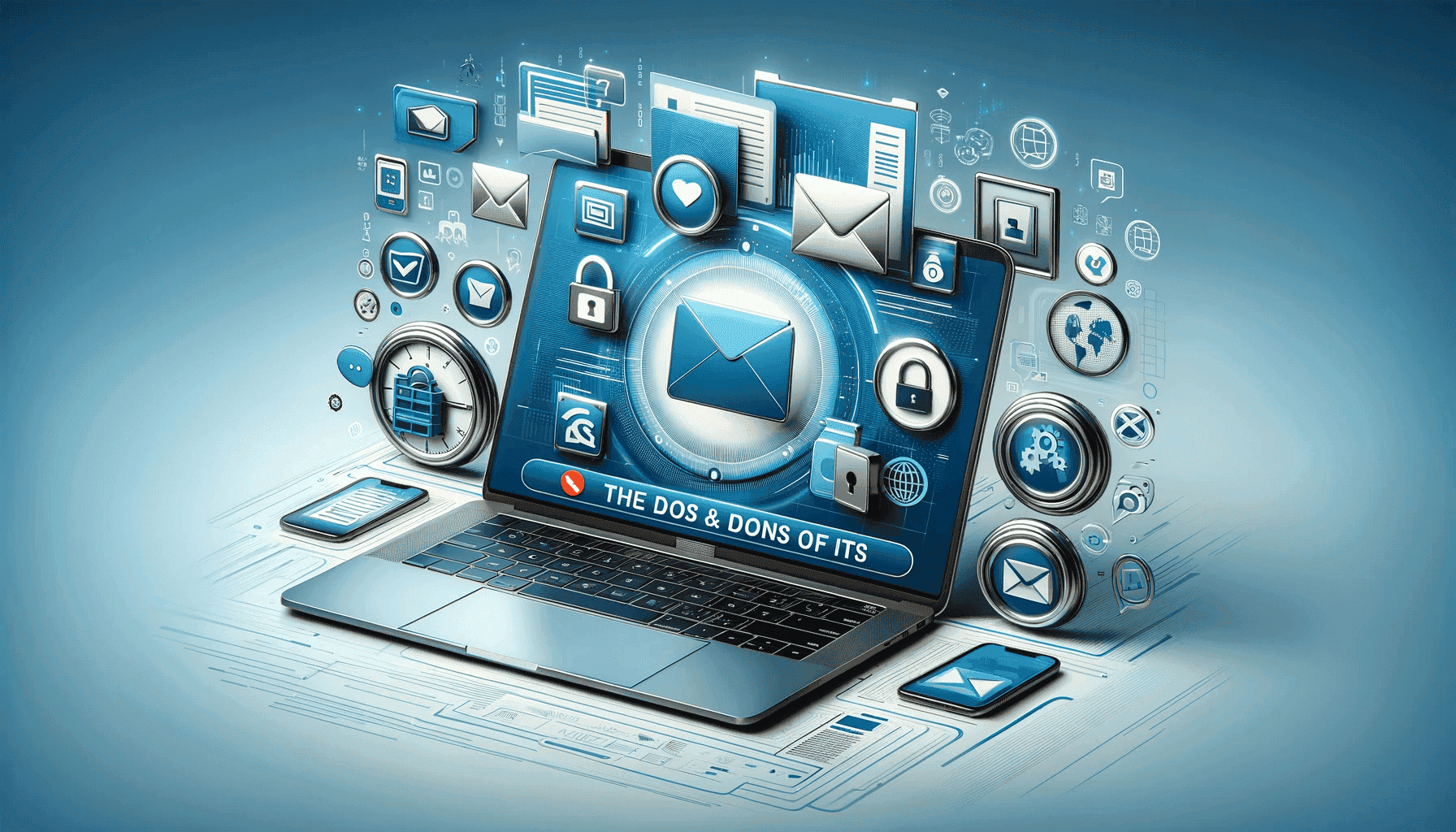
Email Phishing: What it is and how to avoid it
Phishing Definition: What is Phishing?
Phishing is a form of cybercrime where scammers pretend to be someone trustworthy to steal sensitive information such as passwords, credit card numbers, or personal data. These scammers may employ various channels to deceive their victims into giving up this information willingly, the most common being email.
At the core of phishing lies deception. Attackers craft convincing messages or create replica websites that mimic legitimate organizations, banking institutions, or government agencies. The goal is to trick recipients into believing they are interacting with a genuine entity, thereby lowering their guard and unwittingly surrendering valuable information.
The Phishing Email
One of the most common vehicles for a phishing attack is the phishing email. These deceptive messages often appear legitimate, featuring logos, branding elements, and even language consistent with the impersonated organization. They may urge recipients to take urgent action, such as verifying account details, updating payment information, or clicking on a link to resolve an alleged issue.
Once someone takes the bait and clicks on a malicious link or downloads an infected attachment, they may unwittingly expose their sensitive information or compromise their device to malware or ransomware.
Types of Phishing Scams
Phishing scams come in various forms, each tailored to exploit different vulnerabilities or objectives. Some common phishing scams include:
- Financial Phishing: These scams aim to steal login credentials, credit card information, or banking details. Scammers will pose as banks, other financial institutions, or even the government claiming there’s a tax issue (or that they want to give a tax rebate).
- Tech Support Phishing: Impersonating tech support services, these scams trick users into granting remote access to their devices, installing spyware or malware, or purchasing unnecessary services or software. They often begin by telling the victims that their computer is infected and they want to help.
- Fake Lottery or Prize Scams: Promising extravagant rewards, these scams entice victims to provide personal information or pay fees upfront, only to vanish once the payment is made.
- Healthcare Phishing: Exploiting the sensitive nature of healthcare data, these scams target patients or healthcare providers, seeking to access medical records or insurance information which they can use to steal the person’s identity.
Scams can often be a mix of several techniques. Consider a phishing email example where a recipient receives a message purportedly from their bank, informing them of suspicious activity on their account. The email urges the recipient to click on a link to verify their identity and resolve the issue promptly. The link actually leads to a fake website designed to capture their login credentials, which scammers can then use to steal the person’s identity.
Spear Phishing
While traditional phishing casts a wide net, spear phishing takes a more targeted approach. In spear phishing, attackers tailor their messages to specific individuals or organizations, leveraging personal information or context to enhance credibility and increase the likelihood of success. This customization makes spear phishing emails more convincing and harder to detect, as they often bypass traditional spam filters.
Whaling Phishing
A specialized form of spear phishing, whaling targets high-profile individuals within an organization, such as executives or senior management. By impersonating CEOs or other key figures, attackers aim to gain access to sensitive corporate data, financial information, or even initiate fraudulent transactions. Whaling attacks pose significant risks to organizations, as the compromised credentials of key personnel can lead to severe financial and reputational damage.
Avoiding the Phishing Net: Tips for Protection
Protecting yourself against phishing requires a combination of vigilance and proactive measures. Here are some essential tips to help you steer clear of the phishing net:
- Use a Secure Email Provider like Inbox.com: We’re putting this at 1 because it can solve the problem before it even starts. By signing up for an ad-free, high privacy, secure email service like Inbox.com, you won’t get spam email in the first place. Therefore, you’re very unlikely to have issues with scams like phishing emails.
- Be Skeptical of Unsolicited Communications: Exercise caution when receiving emails, text messages, or calls requesting personal or financial information, especially if they claim to be from unfamiliar sources or ask for urgent action.
- Verify Sender Identities: Scrutinize sender email addresses carefully, looking for subtle discrepancies or misspellings that may indicate a phishing attempt. Legitimate organizations typically use official domain names in their email addresses.
- Avoid Clicking on Suspicious Links: Hover over links in emails to preview their destinations before clicking. Beware of URLs that appear unusual or lead to unfamiliar websites. When in doubt, refrain from clicking and instead navigate directly to the organization's official website through your browser.
- Exercise Caution with Attachments: Avoid downloading attachments from unsolicited emails, especially those with file types commonly associated with malware, such as .exe or .zip. If unsure about the legitimacy of an attachment, verify its source with the sender through a separate communication channel.
- Stay Informed About Phishing Trends: Keep abreast of the latest phishing tactics and trends by staying informed through reputable cybersecurity resources, news updates, and awareness campaigns. Understanding evolving threats empowers you to recognize and respond effectively to phishing attempts.
- Enable Multi-Factor Authentication (MFA): Implementing MFA adds an extra layer of security by requiring multiple forms of verification, such as a password and a temporary code sent to your mobile device, to access accounts. This helps mitigate the risk of unauthorized access even if login credentials are compromised.
- Educate Yourself and Others: Educate yourself and your peers about the dangers of phishing and how to recognize suspicious emails or messages. Training programs and awareness campaigns can empower individuals to become the first line of defense against phishing attacks within organizations and communities.
- Keep Software Updated: Regularly update your operating system, antivirus software, web browsers, and other applications to patch security vulnerabilities and protect against known exploits used by cybercriminals.
- Report Suspected Phishing Attempts: If you receive a suspicious email or encounter a potential phishing website, report it to the appropriate authorities or the organization being impersonated. Reporting phishing attempts helps raise awareness and enables swift action to mitigate further risks.
Here are some phishing email examples so you can get a feel for what they may look like. You can also apply some basics like looking out for strange symbols or fonts in the subject line, and checking the email address it was sent from to see if it’s legitimate.
Security threat phishing example
Subject: Urgent Action Required: Verify Your Account Information Now!
Dear Valued Customer,
We have detected unusual activity on your account. To secure your account, please click the link below to verify your account details immediately.
[Verify Now]
Failure to do so within 24 hours may result in suspension or closure of your account.
Thank you for your cooperation.
Sincerely, [Bank Name]
[Note: The "Verify Now" link leads to a fake website designed to steal login credentials.]
Tech support phishing example
Subject: Urgent: Critical Security Alert - Immediate Assistance Required!
Dear [Recipient],
Our system has detected suspicious activity on your device, indicating a potential security breach. To safeguard your data and prevent further damage, please contact our technical support team immediately by calling the number provided below:
[Call Now: 1-800-XXX-XXXX]
Our representatives will guide you through the necessary steps to resolve this issue and secure your device.
Thank you for your prompt attention to this matter.
Sincerely, [Technical Support Department]
[Note: The phone number provided leads to scammers posing as tech support, aiming to gain remote access to victims' devices or extract sensitive information.]
FAQs
What is a phishing email?
A phishing email is a deceptive message sent by cybercriminals posing as a legitimate entity, such as a bank, government agency, or reputable company. These emails typically aim to trick recipients into divulging sensitive information or performing actions that could compromise their security, such as clicking on malicious links or downloading infected attachments.
What is a common indicator of a phishing attempt?
A common indicator of a phishing attempt is the presence of suspicious or unusual elements in an email, such as unexpected requests for sensitive information, grammatical errors, generic greetings (e.g., "Dear Customer"), or urgent demands for immediate action. Additionally, scrutinizing sender email addresses and checking for mismatched URLs in links can help identify phishing attempts.
What is Spear Phishing?
Spear phishing is a targeted form of cyber attack where attackers customize deceptive messages to specific individuals or organizations, aiming to trick them into divulging sensitive information or performing malicious actions.
What is Whaling Phishing?
Whaling phishing is a specialized variant of spear phishing that specifically targets high-profile individuals within an organization, such as executives or senior management, with the goal of obtaining access to sensitive corporate data or initiating fraudulent transactions.
Updated: October 9, 2024 at 10:45 AM
Published: October 9, 2024 at 10:43 AM


